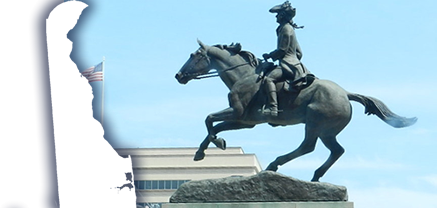Legislation allows for upgrades to C-130H aircraft in a safe and fiscally responsible way
WASHINGTON — U.S. Congressman John Carney (D-DE) today praised the inclusion of important provisions from his C-130H Modernization Act in the National Defense Authorization Act (NDAA). Senator Jon Tester (D-MT) introduced companion legislation in the Senate, which was co-sponsored by Sen. Carper and Coons (both D-DE).
The C-130H is the primary aircraft flown by the Delaware Air National Guard. Unless the C-130H fleet is modernized, the aircraft will be inoperable in 2020 due to Federal Aviation Administration (FAA) and international safety regulations. This could mean the end of the Delaware National Guard’s C-130 flying mission, along with associated job losses.
The provisions of Congressman Carney’s legislation that were adopted into the National Defense Authorization Act give the U.S. Air Force the option to pursue a more targeted and fiscally responsible modernization approach for its C-130 fleet or pursue the full modifications as specified in the Avionics Modernization Program.
“Through extensive conversation with the Air Force, we know that what the Air Force wants is to use an alternative modification system that’s cheaper than AMP and keeps these C-130s in the air. The problem is they don’t have the authority to do that. The language in NDAA gives them that authority,” said Congressman Carney. “This is a critical step forward in preserving the flying mission of Delaware’s Guard.”
Delaware Adjutant General Francis Vavala added, "This legislation is a vital step in ensuring the viability of our Delaware Air National Guard. We have requested that our congressional delegation allow the Air Force to pursue the critical modifications necessary to keep us relevant. They have analyzed it and recognize that these upgrades are in the best interest of our country and the United State Air Force. We are elated and look forward to working with our delegation to secure the future of the Delaware National Guard C-130 mission."
For the past 13 years, the Avionics Modernization Program (AMP) has been the designated program to upgrade the C-130H fleet to ensure compliance with national and international regulations before the 2020 deadline. Due to significant cost overruns, the U.S. Air Force announced in 2012 that it wanted to abandon the AMP program and pursue a more fiscally responsible solution. A cost-benefit study, mandated by Congress, found that modernizing just the navigation systems of the C-130H fleet would cost a quarter of the AMP program, resulting in savings of $12 million per aircraft while still allowing the C-130H models to meet all flight and airspace safety requirements by 2020.
The language in the NDAA does not cancel AMP, but instead gives the Secretary of the Air Force the flexibility to determine the best approach to upgrading the C-130H fleet before the 2020 deadline.
The C-130H aircraft is the military’s primary combat delivery aircraft and has provided humanitarian assistance, precision airdrop and tactical airlift across the globe for more than 40 years. Currently, the C-130H fleet is flown by Air National Guard units in Delaware and 17 additional states.
The House is expected to vote on the NDAA on Thursday, December 4. If passed, the legislation will likely be considered by the Senate before Congress adjourns on December 11.
###
